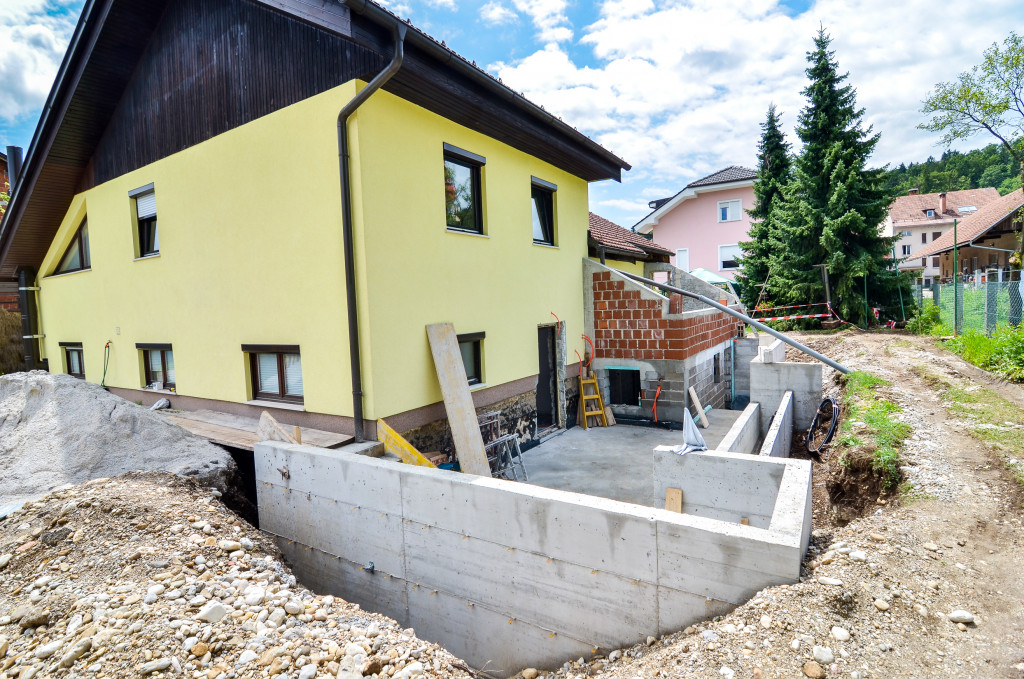Every home has a foundation; however, not every house has the same kind. The type of home foundation is determined by variables such as the house’s structure, geographic region, environment, ground and humidity levels, and cost estimates. The kinds of foundations vary, but your home or addition most certainly has or will have one of these three: a complete or daylight basement, a crawl space, or a concrete slab-on-grade. These are functional—and sometimes even adaptable—foundations that serve millions of houses in various climates and requirements.
Slab
A slab foundation is usually made of concrete that is a couple of inches thick in the middle. For drainage or as a cushion, the concrete slab is often laid over a layer of sand. Crawl spaces are not present in slab-built homes, and there is no room under the floor. If you are thinking about constructing or purchasing a house on a concrete slab, consider many advantages and disadvantages.
Consider a concrete slab, for example. Some homes lack a basement or crawl space underneath them and are instead constructed on a concrete slab, perhaps due to the house’s location on bedrock or a high water table. The concrete is poured all at once onto the ground. Some foundations make use of post-tension cables or are strengthened with steel rods known as rebar to support the house. Consumers and constructors would greatly appreciate dependable metal supplies to reinforce the structure.
On top of this concrete foundation, the home is built. Slab foundations are more prevalent in warm-weather southern regions, where the earth is less prone to freeze and fracture the foundation.
Crawl Space
A crawl space foundation has external concrete walls that raise the bottom of the home 18 inches or more above grade (ground level), giving an accessible location for future plumbing and electrical repairs. Crawl space foundations often require extra support walls under the house’s interior as well. However, if the lot is sloping, a slab would need significant excavation since the high side of the plot will have to be excavated out and leveled with the low side. Crawl space bases are a better option for slopes since they need less excavation.
Crawl spaces are so-called because they are only accessible by crawling — with just around 18 inches of height, they are not big enough to be used as a living area. As a result, they seem to be a lousy compromise between a complete basement and a concrete slab foundation. However, they incorporate many of the advantages of both. In addition to providing a robust and long-lasting foundation for your house, they also offer room for piping systems and the electrical panel.
The ability to store your sewage and electrical cables is perhaps the most significant benefit of having a crawl space beneath your home. This not only keeps it out of the rest of your home, freeing up room elsewhere, but it also gives you (or an expert) accessibility to your utilities if required.
Basement

A basement foundation is the deepest of the three main kinds of foundations. A complete basement is at least 7 feet high and equals most or all of the level floor area above. Taller basements are more common in newer houses to enable transformation into the living room.
The main benefit of a basement is the additional room it offers for storage or dwelling. Finishing a basement may almost increase the living area in some houses. A basement may be conditioned (heated or cooled) like the rest of the house or left unconditioned. In practice, a basement adds additional living space for storage.
This enables you to optimize the square footage of your primary living room while also providing extra space, which is particularly useful for big families. When it comes time to sell your house, a basement will significantly increase the value of your listing.
Other benefits include:
- Being able to purchase or construct a bigger house on a smaller footprint.
- Having safer rooms during tornadoes and different severe weather.
- Having more excellent areas during the warmer months.
We all know intuitively that a solid foundation is essential for any construction project. Indeed, it is so well-known that it is used as a metaphor for stability in various situations. We discuss how relationships need a strong basis of trust or how fundamental knowledge in a particular topic is a foundation for future study. Even our children’s early childhood education is referred to as the foundation years. Of fact, the primary function of a foundation–to support the structure–is also its primary advantage.



